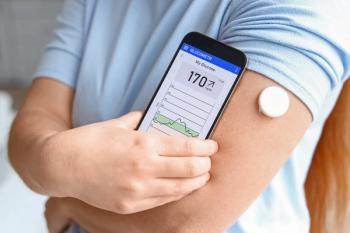
Biden Administration to Push All Businesses With 100 or More Employees to Require COVID-19 Vaccination
Six-point plan outlines strategies to increase national vaccination rates, keep schools open, increase testing and masking access, and to relieve health systems that are overrun with COVID-19 patients.
The Occupational Safety and Health Administration (OSHA) is developing a rule that would require all businesses with 100 or more employees to either ensure that all employees are fully vaccinated or require unvaccinated workers to produce a negative COVID-19 test on a weekly basis, according to a COVID-19 action plan released Thursday by the Biden Administration.
The plan, titled “Path Out of the Pandemic,” outlines 6 federal priorities aimed at ending the COVID-19 pandemic, including vaccinating those who still have not received COVID-19 vaccines, boosting protection for those who are vaccinated, keeping schools open, increasing testing and masking access, encouraging economic recovery, and improving care for patients with COVID-19. The OSHA rule in development falls under the goal to increase vaccinations.
According to the plan, the rule would impact more than 80 million workers in the private sector. The rule would be implemented under an Emergency Temporary Standard issued by OSHA and goes hand-in-hand with the federal mandate requiring vaccinations for all federal workers and contractors with the federal government.
Following President Biden’s announcement in July mandating vaccines or regular testing for all federal employees, the new plan said Biden has signed an Executive Order requiring all federal executive branch workers to be vaccinated. He also signed an Executive Order extending this standard to employees of contractors who work with the federal government.
Additionally, the Centers for Medicare and Medicaid Services (CMS) is taking steps to require COVID-19 vaccines for workers in most health care settings that receive Medicare or Medicaid reimbursement, including hospitals, dialysis facilities, ambulatory surgical settings, and home health agencies. This action follows the recent announcement requiring vaccinations for employees in nursing home facilities and will apply to approximately 50,000 providers.
“This action will create a consistent standard across the country, while giving patients assurance of the vaccination status of those delivering care,” the plan stated.
In addition to these steps to ensure vaccination, the plan outlined additional 2 steps intended to further protect those who are already vaccinated through administering booster shots. These steps included providing easy access to booster shots once they are available and ensuring that individuals know where to receive a booster vaccine. The administration is still preparing for booster shots to be available as early as the week of September 20, according to the plan.
Providing access to COVID-19 testing continues to also be a priority, the plan stated. In addition to expanding easy-to-use testing production and looking to make OTC tests more affordable, the plan said the Department of Health and Human Services (HHS) will expand the number of retail pharmacy sites providing free COVID-19 testing.
“As part of our strategy to ensure the most convenient access to free testing, we will expand the number of retail pharmacy sites around the country where anyone can get tested for free through the HHS free testing program to 10,000 pharmacies,” the plan stated.
Finally, the plan outlined 3 priorities for improving care for those diagnosed with COVID-19, centered around increasing support for hospitals overrun with COVID-19 patients and expanding access to monoclonal antibodies. Since the beginning of the newest Delta variant surge in early July, the plan said the administration has worked with 18 of the hardest-hit states to deploy nearly 1000 personnel, as well as to surge ventilators, ambulances, and other equipment necessary to support strained health care systems.
The new plan will expand this support by doubling the number of clinician teams deployed by the Department of Defense. These teams work in intensive care units and other acute care settings to support overburdened local health care workers, according to the plan. In addition, the Department of Veterans Affairs has opened more than 150 hospital beds across the country to reduce the burden on local hospitals.
All of these steps are intended to reduce the strain on local health systems in hard-hit regions, as well as improving national COVID-19 trends to end the pandemic.
“This plan will ensure that we are using every available tool to combat COVID-19 and save even more lives in the months ahead, while also keeping schools open and safe, and protecting our economy from lockdowns and damage,” the report stated.
REFERENCE
Path Out of the Pandemic. News release. White House; September 9, 2021. Accessed September 9, 2021.
Newsletter
Stay informed on drug updates, treatment guidelines, and pharmacy practice trends—subscribe to Pharmacy Times for weekly clinical insights.
















































































































































































































